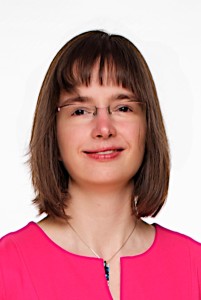Two people with similar brain changes that may give rise to dementia can have very different disease manifestations… we think that a holistic understanding of overall health and social environments will contribute to solving this puzzle. Dr. Melissa Andrew

There is a pattern that is “unmistakeable” in the clinic, and yet unexamined in studies and trials. According to Dr. Melissa Andrew, individuals who have many medical, functional, and social problems are at an increased risk of developing dementia, and also tend to have a more severe disease course.
Advancing research in this area is complicated by the fact that the patients seen by physicians in clinics tend to be “older, more women than men, socially vulnerable, and have functional difficulties and many overall health problems.” By contrast, the people in trials and studies tend to be selected specifically for “not having other things wrong,” Andrew explains.
While selectiveness makes sense from a practical standpoint – in that it gives researchers increased clarity on the effects of what is being tested in a study or trial – it also, and regrettably, excludes the “true face of dementia” by leaving older, frailer people with multiple medical conditions, out.
The CCNA will play a crucial role in revealing the true face of dementia. Through the consortium, Dr. Andrew and her team will learn:
(1) Why does having many things wrong (“multi-morbidity”) increase the risk and severity of dementia?
(2) What can we do to reduce the risk and severity of dementia?
(3) How can healthcare providers better manage the symptoms and other medical conditions that coincide with dementia?
So far, Dr. Andrew’s team has collaborated with the Women, Gender, Sex, and Dementia cross-cutting program of the CCNA, to ensure that the Clinical Cohorts (Platform 1) are collecting the type of information that is needed to better understand a full picture of participants’ medical and functional issues (to answer questions about multi-morbidity), and how sex and gender influence dementia.
Although still in the preliminary stages of their research, Dr. Andrew suspects that a major factor in increasing the risk of dementia, and the severity of the disease course, is an individual’s capacity for repairing damage to bodily systems. It stands to reason that the more damages an individual has to their system on the molecular level, the more likely their repair capacity will be diminished by being overworked. Even feelings of being able to deal with stressors as they arise can impact the risk and severity of dementia. Social environments, stress hormones, immune system function, health behaviours associated with socioeconomic status, as well as access to resources all play a role in an individual’s repair capacity, according to Dr. Andrew. In a word, “the more supportive a person’s social environment is, the better they can tolerate demands and damages to their system.”
Dr. Andrew’s approach is aligned with a growing conversation about the need to develop holistic treatments for dementia at the early stages of the disease – treatments that take account not only of each individual’s physical condition, but also their environment and life circumstances. What is unique about Dr. Andrew and her team’s project is their guiding belief that in considering “non-traditional” risk factors for dementia, and considering them together rather than one at a time, they will come closer to understanding how real dementia arises, its manifestation, and how to best identify and treat it.
